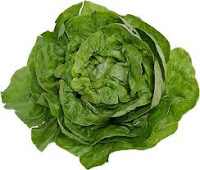There are hundreds of varieties of green bean, and each one produces a large bean or seed if they are left to reach maturity. However we eat many of them fresh. The French bean, phaliyan in Urdu, produces the haricot bean when it is mature, and I once spent an hour or so extracting the small seeds from the dried pods on a rooftop in Lahore. The pods were discarded, but the little beans were delicious when cooked.
Green beans originated in the Andes region of South America and also, probably in the Indian subcontinent. They were taken back to Europe by Columbus in 1493 and later by other Spanish and Portuguese explorers. The bean described by Virgil is now though to be the hyacinth bean, as the Romans could not have known about the green beans that are so common today. They are not as well liked it would seem in India and Pakistan, as the dried beans such as the moong bean are more common fare. As legumes they are related to peas and chick peas, and green beans are a good source of beta-carotene despite their green colour. The raw beans contain a toxalbumin, phasin which is destroyed in the cooking process, so they should not be eaten raw.
 They have been used in traditional medicine practices around the world to treat a variety of ailments including acne, diabetes, burns, dysentery and as a diuretic and are believed to help the kidneys to function normally. Legumes are richer in proteins than all other plants and so are a good source of protein for vegetarians. They are also the legume which is most commonly eaten.
They have been used in traditional medicine practices around the world to treat a variety of ailments including acne, diabetes, burns, dysentery and as a diuretic and are believed to help the kidneys to function normally. Legumes are richer in proteins than all other plants and so are a good source of protein for vegetarians. They are also the legume which is most commonly eaten. A study of the green beans grown in the Mediterranean region, published in 1988, traced these green beans ancestor to the Andes.
 Green beans contain phytonutrients which include lutein, violaxanthin, neoxanthin and beta-carotene, which have antioxidant properties. They also contain vitamins A, C, K and some of the B-complex vitamins, along with amino acids, bioflavonoids such as quercetin and kaempferol and the minerals manganese, potassium, iron, calcium, copper, selenium, zinc and phosphorous, along with Omega-3 fatty acids including alpha-linoleic acid (ALA). The antioxidant properties of green beans give them cholesterol and heart protective actions, and they are good for our overall health.
Green beans contain phytonutrients which include lutein, violaxanthin, neoxanthin and beta-carotene, which have antioxidant properties. They also contain vitamins A, C, K and some of the B-complex vitamins, along with amino acids, bioflavonoids such as quercetin and kaempferol and the minerals manganese, potassium, iron, calcium, copper, selenium, zinc and phosphorous, along with Omega-3 fatty acids including alpha-linoleic acid (ALA). The antioxidant properties of green beans give them cholesterol and heart protective actions, and they are good for our overall health. The recipe below requires small fresh French beans, which just need to be snipped at both ends before cooking. Put them in salted water, bring to the boil and cook for about 15 minutes until they are tender but not too soft. They should still be a little crunchy.
SALADE NIÇOISE
Ingredients
8 oz cooked French beans, trimmed
4 hard-boiled eggs, halved
1 or 2 tins tuna fish, drained and flaked
1 tbsp capers
4 oz black olives
1 small tin of anchovies, each one snipped in half and washed to remove the saltiness
8 oz cooked potatoes, cubed
3-4 tomatoes, roughly chopped
1 small red onion, finely sliced (optional)
1 head lettuce, leaves separated but kept whole
Dressing
2 tbsps olive oil
1½ tbsps white wine vinegar
few sprigs of fresh oregano, or ½ tsp dried
Method
Place lettuce leaves in a bowl and in another combine all the other ingredients with freshly ground black pepper. (As anchovies are salty you probably won’t need extra salt.)
This has Taste and is a Treat.















































